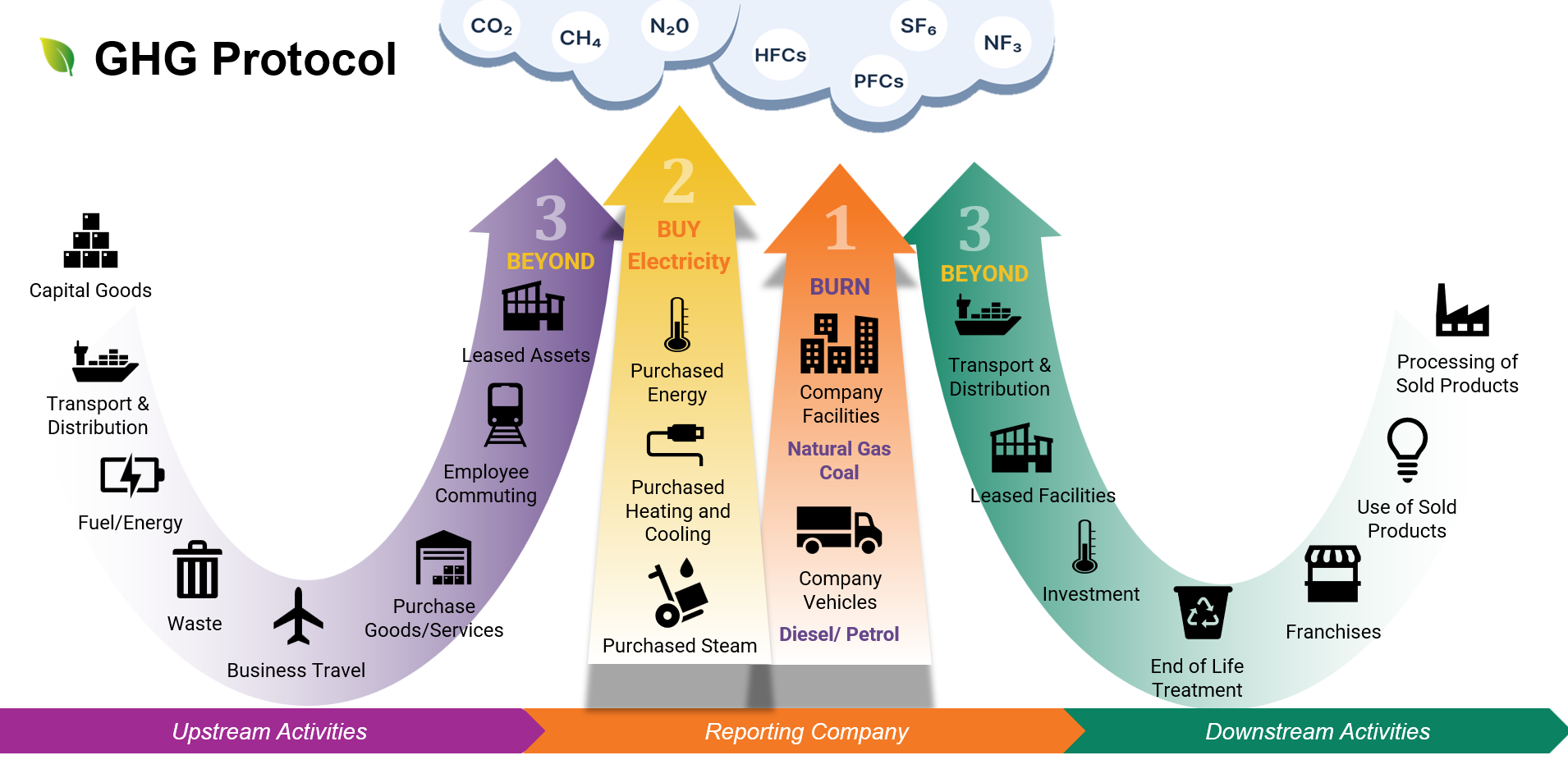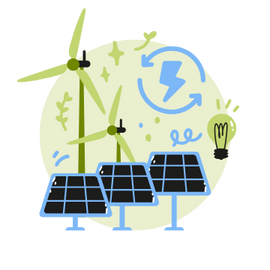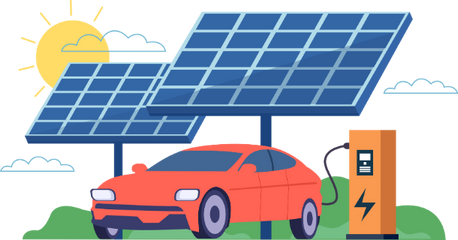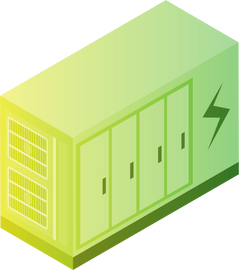Green Technology
Kick start your Decarbonisation Journey with Green Technologies: A Guide to GHG Protocol Scopes 1, 2, and 3
The GHG Protocol provides a framework to measure and manage greenhouse gas (GHG) emissions. These emissions are divided into three scopes, and adopting the right green technologies can help reduce them effectively.


Scope 1|
What You Burn
Scope 1: Focuses on emissions within direct operational control. These are emissions that an organization directly controls, such as those from its facilities, vehicles, or equipment.
Technologies applicable for Scope 1 focusing on reducing the reliance on fossil fuels such as:

▪ Electrifying a fleet with electric vehicles (EVs) eliminates emissions from fuel combustion.


Scope 2|
What You Purchase
Scope 2: Addresses emissions linked to energy procurement. These emissions occur from producing the electricity, steam, heating, or cooling that the organization purchases.
Technologies applicable for Scope 2 aim to decarbonize energy use by sourcing or generating cleaner power. For example:

▪ Purchasing electricity from renewable sources, such as solar or wind, through Power Purchase Agreements (PPAs) ensures the organization uses green energy, reducing emissions tied to grid electricity.
▪ Installing on-site solar panels or wind turbines decreases dependence on fossil fuel-generated grid electricity.


▪ Energy storage systems, like batteries, ensure consistent use of renewable energy even during peak demand or intermittent supply.

Scope 3|
Beyond What You Burn and Purchase
Scope 3: Covers all other emissions from the value chain, such as goods and services purchased, waste disposal, transportation, and even employee commuting.
Scope 3 is the most complex, as it involves emissions the organization does not directly control but influences through its choices. Technologies that link to Scope 3 include:

▪ Sustainable supply chain management tools, such as blockchain, ensure traceability and reduce emissions throughout the product lifecycle.
▪ Circular economy practices like recycling and upcycling reduce emissions from production and waste.


▪ Encouraging employees to adopt low-carbon transportation (e.g., carpooling or public transport apps) reduces commuting emissions.
In short, Green technologies act as enablers to decarbonize operations across all scopes:
Scope 1 benefits from clean energy and efficient systems.
Scope 2 relies on renewable energy adoption and management.
Scope 3 depends on collaborative efforts and innovative solutions across the value chain.
Related Content

Green Offer
The Green Offer enables our customers - installers, industry and infrastructures - to purchase products based on a sustainability rating, allowing them to lower their carbon footprint and that of the end user.

